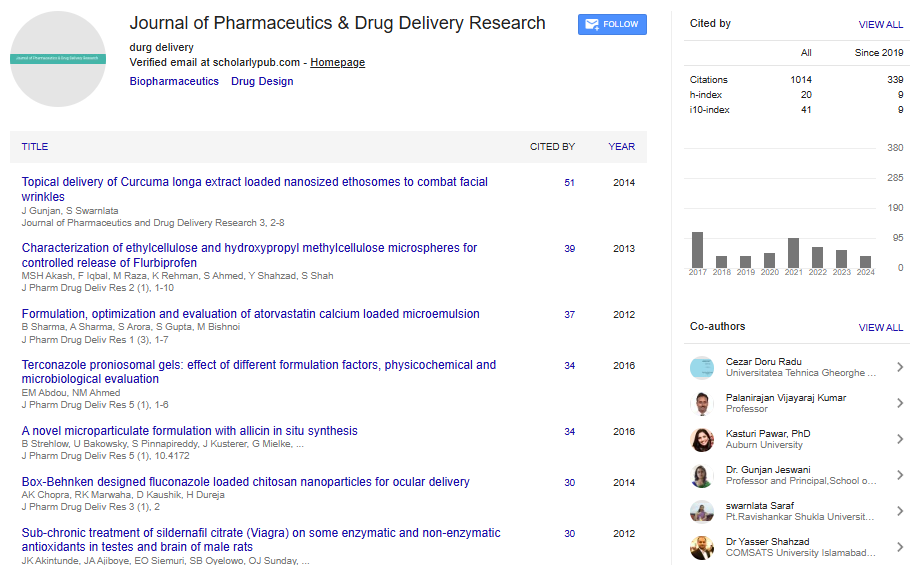Synthesis of ginseng-based nanoparticles and its applications
Yeon-Ju Kim, Josua Markus, Ramya Mathiyalagan, Priyanka Singh and Deok Chun Yang
Kyung Hee University, Republic of Korea
: J Pharm Drug Deliv Res
Abstract
Women who have experienced intimate Panax ginseng Meyer (Korean ginseng) has considered it as one of the highly-valued medicinal plants in Traditional Chinese Medicine (TCM) for centuries. Ginsenosides are triterpene saponins and are the bioactive components in Korean Ginseng. Ginsenosides are classified broadly as Proto panaxa Diols (PPD) or Proto Panaxa Triols (PPT). These have been shown to flaunt a vast array of pharmacological activities such as anti-cancer, anti-inflammatory, anti-diabetic, anti-aging, enhanced immunization and liver functions and protective effects against Alzheimer’s disease. However, the clinical application of ginsenoside is significantly limited due to its poor solubility, poor oral bioavailability, and non-targeted cytotoxicity to normal cells. As a result, biomolecular conjugations of ginsenosides and drug delivery are indispensable to achieve desirable therapeutic outcomes. To solve these challenges, polyethylene glycol and glycol chitosan have been successfully conjugated to ginsenoside CK and PPD via cleavable ester bonds by carbodiimide chemistry. The resulting polymeric nanoparticles demonstrated significant aqueous solubility compared to hydrophobic ginsenosides. Controlled ginsenoside release was also achieved in acidic environment, mimicking the lysosomal compartment in the cell. Most importantly, polymer ginsenoside conjugates showed increased cytotoxicity in HT29 cancer cells while maintaining good cell viability in RAW264.7 cells than CK. Moreover, it inhibited lipopolysaccharide (LPS) induced nitric oxide (NO) production. Bovine serum albumin (BSA) has also been used to encapsulate Ginsenoside CK to increase its aqueous solubility. In vitro cytotoxicity assays of the BSA–CK nanoparticles revealed that it exhibited greater in vitro therapeutic efficacy in the HaCaT skin cell line, the A549 lung cancer cell line, the HepG2 liver carcinoma cell line and the HT29 colon cancer cell line in comparison with free CK. Similarly, RAW264.7 cells treated with BSA–CK NPs exhibited decreased lipopolysaccharide-induced NO production and also has been in short, the use of nano-sized ginsenosides are expected to be prolific on the treatment of cancer in the future.
Biography
Yeon Ju Kim has her expertise in evaluation and passion in improving the health and wellbeing. She tried to modify novel ginsenosides for more effective pharmaceutical application. She has built this application after years of experience in research and teaching as Assistant Professor at Kyung Hee Universtiy.
Email: yeonjukim@khu.ac.kr
 Spanish
Spanish  Chinese
Chinese  Russian
Russian  German
German  French
French  Japanese
Japanese  Portuguese
Portuguese  Hindi
Hindi 
